Fast food can be a convenient option, but finding healthy fast food options can be a challenge. FOODS.EDU.VN is here to guide you through the maze of menus, helping you discover nutritious and delicious choices. Let’s explore better-for-you meals, smart swaps, and quick picks that won’t compromise your well-being with healthier alternatives and balanced meals from your favorite fast-food joints.
1. Understanding the Landscape of Healthy Fast Food Choices
Navigating the world of fast food can be tricky when you’re aiming for a healthier lifestyle. But it’s not impossible. The key is to understand what makes a fast-food option healthy and to make informed decisions. This section breaks down the essential elements of nutritious fast food and offers strategies for selecting the best choices.
1.1. Defining Healthy Fast Food
What exactly constitutes “healthy” fast food? It’s not just about calorie counting; it’s about the nutritional value you get per calorie. Healthy fast food options should be:
- Lower in Calories: Aim for meals under 500 calories to manage your daily intake effectively.
- Rich in Protein: Protein helps you feel full longer, aiding in weight management and muscle maintenance.
- High in Fiber: Fiber supports digestive health and also contributes to satiety.
- Lower in Saturated and Trans Fats: These fats can negatively impact heart health.
- Moderate in Sodium: High sodium intake can lead to high blood pressure.
- Packed with Nutrients: Look for options with plenty of vitamins and minerals from vegetables, lean proteins, and whole grains.
1.2. Common Misconceptions About Fast Food
Many people assume all fast food is inherently unhealthy, but this isn’t necessarily true. Here are a few common misconceptions:
- Salads are Always Healthy: While salads can be a good choice, creamy dressings and fried toppings can quickly add calories and unhealthy fats.
- Anything “Grilled” is Healthy: Grilled items are generally better than fried, but they can still be high in sodium and may contain unhealthy additives.
- Low-Calorie Means Healthy: A low-calorie meal might still be lacking in essential nutrients like protein and fiber.
1.3. Strategies for Making Healthier Choices
Here are some practical strategies to help you navigate fast-food menus:
- Plan Ahead: Check the restaurant’s nutritional information online before you go.
- Customize Your Order: Ask for dressings and sauces on the side, and load up on vegetables.
- Opt for Grilled or Baked: Choose grilled chicken, baked potatoes, or other non-fried options.
- Choose Whole Grains: If available, select whole-grain bread or wraps.
- Watch Your Portions: Order smaller sizes or share a meal with a friend.
- Hydrate: Drink water instead of sugary sodas.
- Read Reviews: Check out what other users and experts say about healthy options at the restaurant you intend to visit.
By understanding these key elements and adopting smart strategies, you can make informed choices and enjoy fast food without derailing your health goals. For more in-depth information and expert advice, visit FOODS.EDU.VN.
2. Expert Recommendations for Healthy Fast Food Options
Finding healthy fast food options requires knowing what to look for and where to find it. This section compiles recommendations from registered dietitians and nutritionists, highlighting specific menu items at popular fast-food chains that align with healthy eating principles. Each recommendation includes nutritional information and expert insights to help you make informed decisions.
2.1. Taco Bell: Cantina Chicken Power Bowl
The Taco Bell Cantina Chicken Power Bowl is a standout choice for those seeking a balanced and nutritious meal on the go.
-
Nutritional Information (Per Bowl):
- Calories: 490
- Fat: 24g (Saturated Fat: 7g)
- Sodium: 1,150mg
- Carbs: 44g (Fiber: 11g, Sugar: 3g)
- Protein: 25g
-
Expert Insight: “The Taco Bell Cantina Chicken Power Bowl is a commendable fast food choice. With 490 calories, it provides a reasonable energy intake, while its 25 grams of protein support muscle maintenance and repair, promoting satiety. The bowl also boasts 11 grams of fiber, which aids in digestion, helps regulate blood sugar levels, and supports overall gut health. The combination of lean chicken, wholesome ingredients, and various vegetables ensures you’re getting essential vitamins and minerals.” – Mary Sabat, MS, RDN, LD
-
Why It’s a Good Choice: This bowl offers a balanced mix of protein, fiber, and complex carbohydrates. The lean chicken, black beans, rice, and vegetables provide essential nutrients, while the guacamole adds healthy fats.
2.2. Wendy’s: Apple Pecan Salad
Wendy’s Apple Pecan Salad is a well-rounded option that offers a nutritious balance of protein, fiber, and healthy fats.
-
Nutritional Information (Per Salad):
- Calories: 440
- Fat: 24g (Saturated Fat: 10g)
- Sodium: 1,160mg
- Carbs: 28g (Fiber: 5g, Sugar: 19g)
- Protein: 31g
-
Expert Insight: “Wendy’s Apple Pecan Salad is a well-rounded fast food option, offering a nutritious balance of protein, fiber, and healthy fats. With 440 calories, it provides a moderate calorie count suitable for a meal, while delivering 31 grams of protein, which supports muscle maintenance and satiety. The inclusion of romaine lettuce, apple bites, and spring mix ensures a good intake of vitamins and minerals, along with dietary fiber, which aids digestion. The pomegranate vinaigrette dressing adds a flavorful yet light touch, and the blue cheese crumbles contribute calcium and probiotics. The grilled chicken is a lean protein source, and the roasted pecans add healthy fats and a satisfying crunch.” – Mary Sabat, MS, RDN, LD
-
Why It’s a Good Choice: This salad is packed with protein from the grilled chicken, fiber from the greens and apples, and healthy fats from the pecans. The variety of ingredients ensures a good intake of vitamins and minerals.
2.3. McDonald’s: Fruit and Maple Oatmeal
The McDonald’s Fruit and Maple Oatmeal is a healthy breakfast option, particularly for those on the go.
-
Nutritional Information (Per Order):
- Calories: 320
- Fat: 4.5g (Saturated Fat: 1.5g)
- Sodium: 150mg
- Carbs: 64g (Fiber: 4g, Sugar: 31g)
- Protein: 6g
-
Expert Insight: “The McDonald’s Fruit and Maple Oatmeal is a healthy breakfast option, especially for those on the go, due to its nutritious blend of ingredients. This oatmeal provides complex carbohydrates, which are essential for sustained energy throughout the morning, and contains 4 grams of fiber, which aids in digestion and promotes satiety. Including diced apples and a cranberry raisin blend enhances the flavor and adds natural sweetness, vitamins, and antioxidants. While it has 6 grams of protein, which is relatively low, the light cream can contribute a bit more protein and a creamy texture. Overall, McDonald’s Fruit and Maple Oatmeal is a convenient and wholesome breakfast option, providing a good mix of fiber, vitamins, and energy-boosting carbohydrates.” – Mary Sabat, MS, RDN, LD
-
Why It’s a Good Choice: This oatmeal provides complex carbohydrates for sustained energy, fiber for digestion, and natural sweetness from fruits. It’s a convenient and relatively low-calorie option for breakfast.
2.4. Chipotle: Lifestyle Wholesome Bowl
Chipotle’s Lifestyle Wholesome Bowl is a balanced and nutritious option, especially for those following a low-carb diet.
-
Nutritional Information (Per Bowl):
- Calories: 460
- Fat: 29g
- Carbs: 18g
- Protein: 35g
-
Expert Insight: “You might want to try Chipotle’s Lifestyle Wholesome Bowl for its balanced and nutritious profile, especially if you’re health-conscious or following a low-carb diet. With just 460 calories, it packs an impressive 35 grams of protein, making it an excellent choice for muscle repair and satiety. The bowl is low in carbs, with only 18 grams, which is ideal for those watching their carbohydrate intake. The organic ingredients, including fresh lettuce, succulent chicken, vibrant fajita veggies, zesty fresh tomato salsa, and creamy guacamole, not only enhance the flavor but also ensure you’re consuming high-quality, wholesome foods. This combination makes it a delicious, convenient, and healthy fast-food option.” – Mary Sabat, MS, RDN, LD
-
Why It’s a Good Choice: This bowl is high in protein and low in carbs, making it an excellent choice for those looking to manage their weight or follow a specific diet. The fresh, organic ingredients provide essential nutrients and flavor.
2.5. Jimmy John’s: Mediterranean Wrap
The Mediterranean Wrap from Jimmy John’s offers a plant-based protein source that is both flavorful and satisfying.
-
Nutritional Information (Per Wrap):
- Calories: 760
- Fat: 38g (Saturated Fat: 9g)
- Sodium: 2,030mg
- Carbs: 69g (Fiber: 7g, Sugar: 7g)
- Protein: 37g
-
Expert Insight: “Made with Sabra Roasted Red Pepper Hummus, the Mediterranean Wrap from Jimmy Johns offers a plant-based protein source that is both flavorful and satisfying. The olive tapenade and crumbly feta cheese add healthy fats and a unique taste. At the same time, fresh cucumber, tomato, onion, and lettuce provide essential vitamins, minerals, and fiber, contributing to overall health and satiety. Wrapped in a spinach tortilla, this option is lower in calories and adds an extra nutrient boost. The oregano-basil seasoning and oil & vinegar dressing enhance the Mediterranean profile without adding excessive calories. With a calorie range of 480-780, depending on customization, this wrap is a delicious and nutritious choice for those seeking a wholesome meal at Jimmy John’s.” – Mary Sabat, MS, RDN, LD
-
Why It’s a Good Choice: This wrap is packed with plant-based protein from hummus, healthy fats from olive tapenade and feta cheese, and fiber from vegetables. The spinach tortilla adds an extra nutrient boost.
2.6. Chick-fil-A: Grilled Chicken Sandwich
The Chick-fil-A Grilled Chicken Sandwich is a lean protein option that’s lower in calories and fat compared to fried alternatives.
-
Nutritional Information (Per Sandwich):
- Calories: 390
- Fat: 12g (Saturated Fat: 2g)
- Sodium: 770mg
- Carbs: 44g (Fiber: 3g, Sugar: 12g)
- Protein: 28g
-
Expert Insight: “The Chick-fil-A Grilled Chicken Sandwich is a lean protein option that’s lower in calories and fat compared to popular deep-fried alternatives.” – Lisa Young, PhD, RDN
-
Why It’s a Good Choice: This sandwich provides a good source of lean protein from the grilled chicken breast, with fewer calories and less fat than the fried version. The lettuce and tomato add some nutrients.
2.7. Dunkin’: Egg and Cheese on English Muffin
The Egg & Cheese on English Muffin from Dunkin’ is a lower-calorie breakfast option compared to other choices.
-
Nutritional Information (Per Sandwich):
- Calories: 460
- Fat: 13g (Saturated Fat: 5g)
- Sodium: 1,010mg
- Carbs: 66g (Fiber: 4g, Sugar: 8g)
- Protein: 19g
-
Expert Insight: “The Egg & Cheese from Dunkin’ has fewer calories compared to other options, making it a suitable choice for those monitoring their caloric intake. It contains high-quality protein from the egg and cheese, which can help keep you full and satisfied, and the cheese also contains helpful calcium.” – Lisa Young, PhD, RDN
-
Why It’s a Good Choice: This sandwich provides protein from the egg and cheese, with fewer calories than many other breakfast options. The English muffin offers some fiber.
By incorporating these expert-recommended options into your diet, you can enjoy fast food while still maintaining a healthy lifestyle. Always remember to check the latest nutritional information on the restaurant’s website, as menus and ingredients can change.
3. Smart Swaps and Customizations
Making healthier choices at fast-food restaurants often involves smart swaps and customizations. By tweaking your order, you can significantly reduce calories, fat, and sodium while still enjoying your meal. This section provides practical tips and examples of how to modify your orders for a healthier outcome.
3.1. Swapping High-Calorie Items for Healthier Alternatives
One of the easiest ways to make a fast-food meal healthier is to swap high-calorie items for lower-calorie alternatives. Here are some common swaps:
- Fried Foods for Grilled: Instead of fried chicken, opt for grilled chicken. Instead of french fries, choose a side salad or fruit.
- Creamy Dressings for Vinaigrettes: Swap creamy salad dressings like ranch or blue cheese for lighter vinaigrettes.
- Sugary Drinks for Water or Unsweetened Tea: Avoid sodas and sweetened beverages, which are high in empty calories.
- Refined Grains for Whole Grains: Choose whole-grain bread or wraps when available.
- Full-Fat Dairy for Low-Fat: Opt for low-fat milk or yogurt in your coffee or oatmeal.
3.2. Customizing Your Order for Better Nutrition
Customizing your order allows you to control the ingredients and portion sizes, leading to a healthier meal. Here are some customization tips:
- Ask for Sauces and Dressings on the Side: This allows you to control the amount of sauce or dressing you use, reducing calories and sodium.
- Add Extra Vegetables: Load up on lettuce, tomatoes, onions, and other veggies to increase your fiber and nutrient intake.
- Remove Unnecessary Ingredients: Skip the cheese, bacon, or other high-fat toppings.
- Downsize Your Order: Order a smaller size or split a larger meal with a friend.
- Request No Butter or Mayonnaise: Ask for your sandwich or burger without butter or mayonnaise to save calories and fat.
3.3. Examples of Smart Swaps and Customizations at Popular Chains
To illustrate these tips, here are some specific examples of smart swaps and customizations at popular fast-food chains:
| Restaurant | Original Order | Smart Swap/Customization | Healthier Outcome |
|---|---|---|---|
| McDonald’s | Big Mac | Order a McChicken (grilled if available) and add lettuce and tomato. Skip the mayonnaise. | Lower in calories, fat, and sodium. |
| Burger King | Whopper | Order a grilled chicken sandwich with lettuce and tomato. Skip the mayonnaise. | Lower in calories, fat, and sodium. |
| Subway | Footlong Meatball Marinara | Order a 6-inch turkey breast sub on whole-wheat bread. Add lettuce, tomato, onions, and peppers. Use light vinaigrette. | Lower in calories, fat, and sodium. Higher in protein and fiber. |
| Taco Bell | XXL Grilled Stuft Burrito | Order a Cantina Chicken Power Bowl. Ask for light cheese and guacamole. | Lower in calories, fat, and sodium. Higher in protein and fiber. |
| Wendy’s | Dave’s Triple | Order a grilled chicken sandwich with lettuce and tomato. Skip the mayonnaise. | Lower in calories, fat, and sodium. |
| Chick-fil-A | Chick-fil-A Chicken Sandwich | Order a Grilled Chicken Sandwich. Skip the sauce or use a light vinaigrette. | Lower in calories, fat, and sodium. |
| Starbucks | Caramel Frappuccino | Order a unsweetened iced coffee with a splash of almond milk and a sprinkle of cinnamon. | Significantly lower in calories and sugar. |
| Dunkin’ | Glazed Donut | Order a whole-wheat bagel with a thin spread of cream cheese. | Lower in calories and sugar. Higher in fiber. |
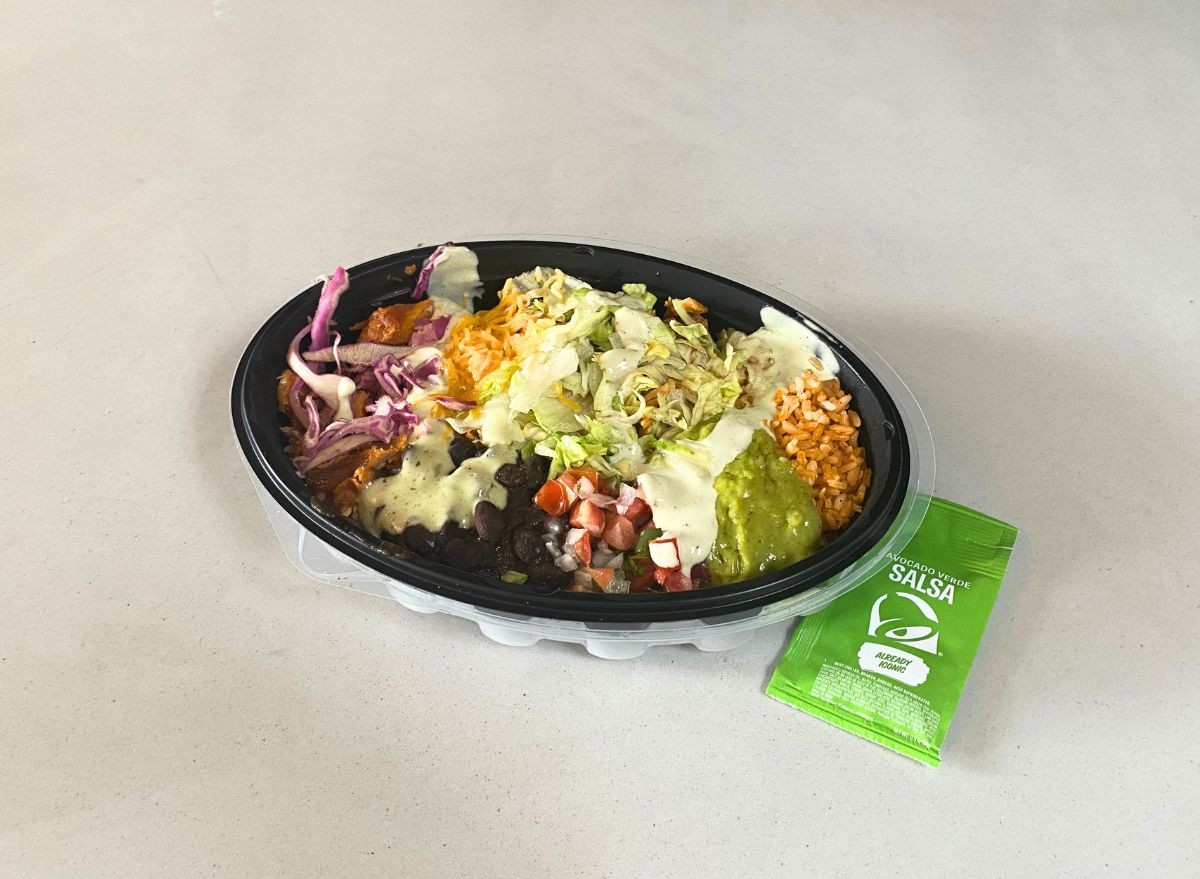
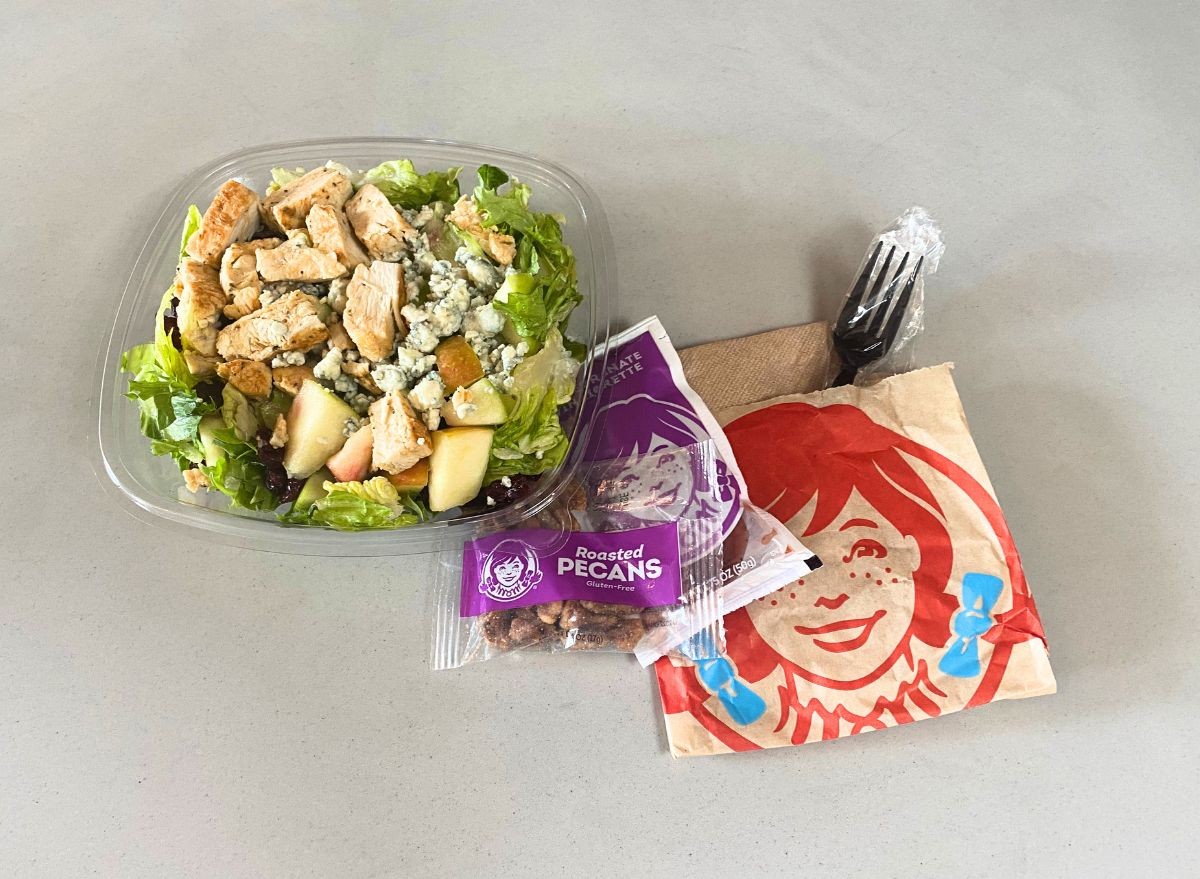
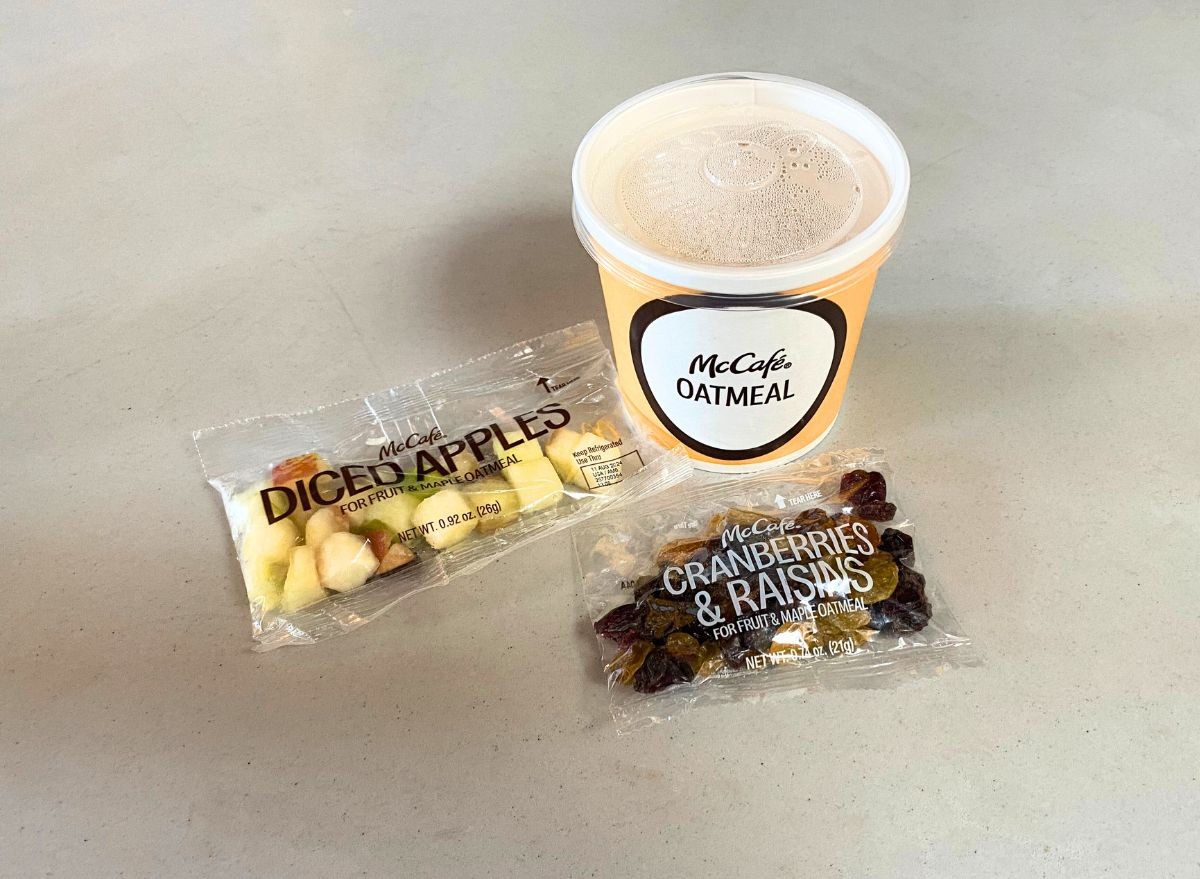
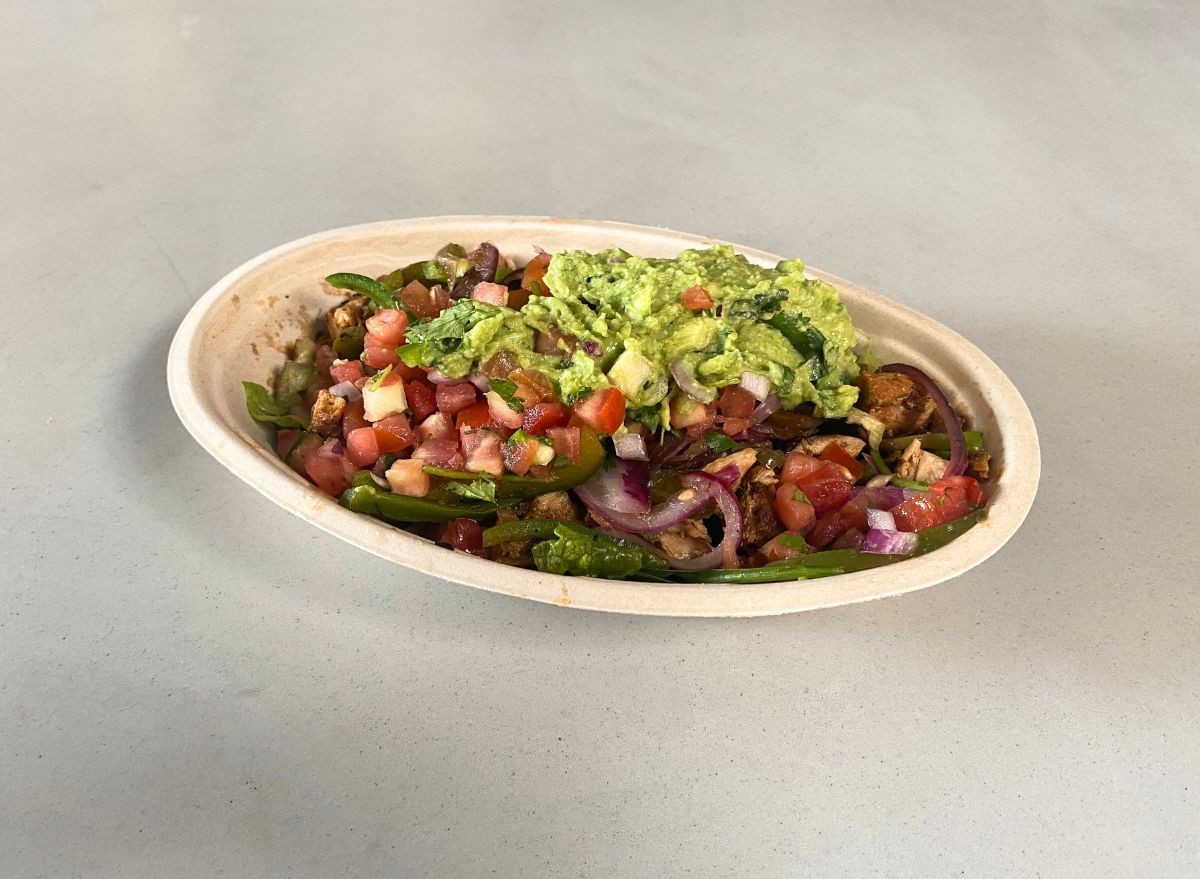
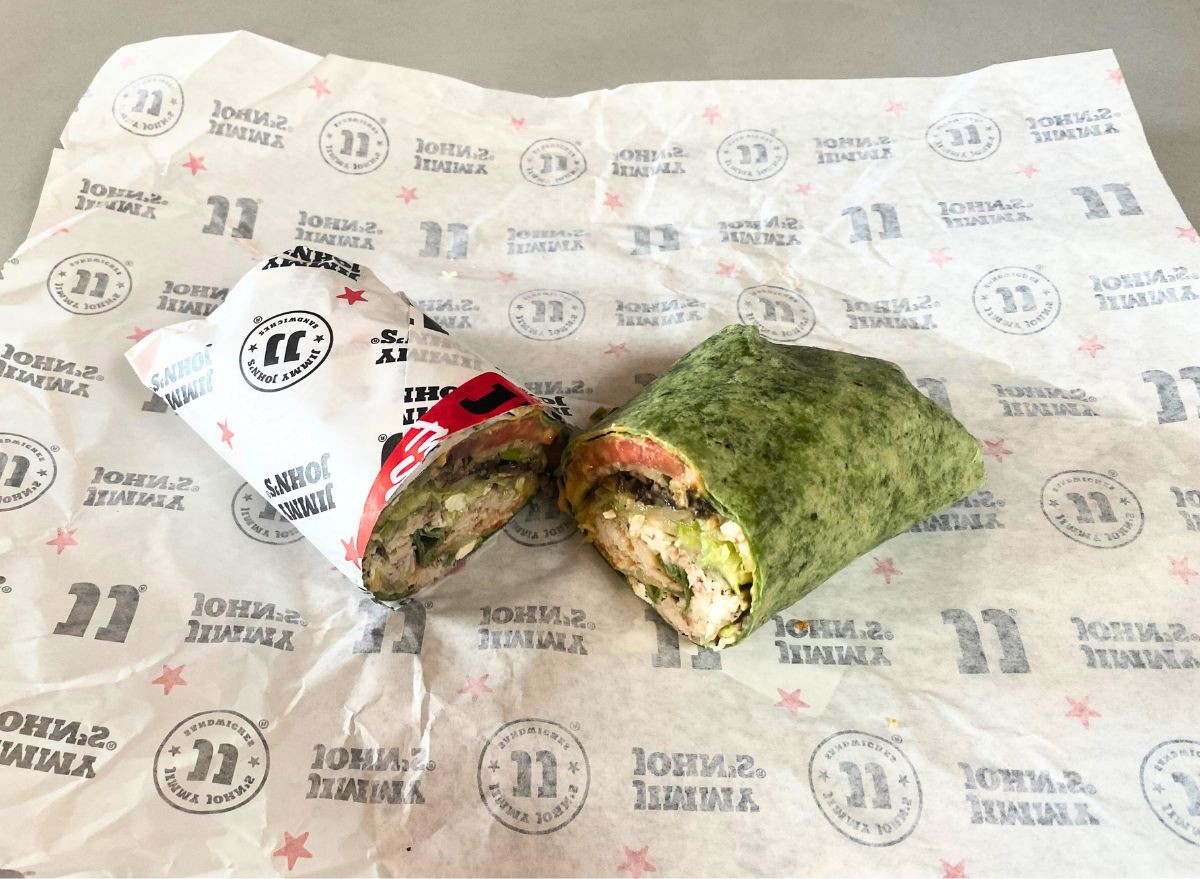
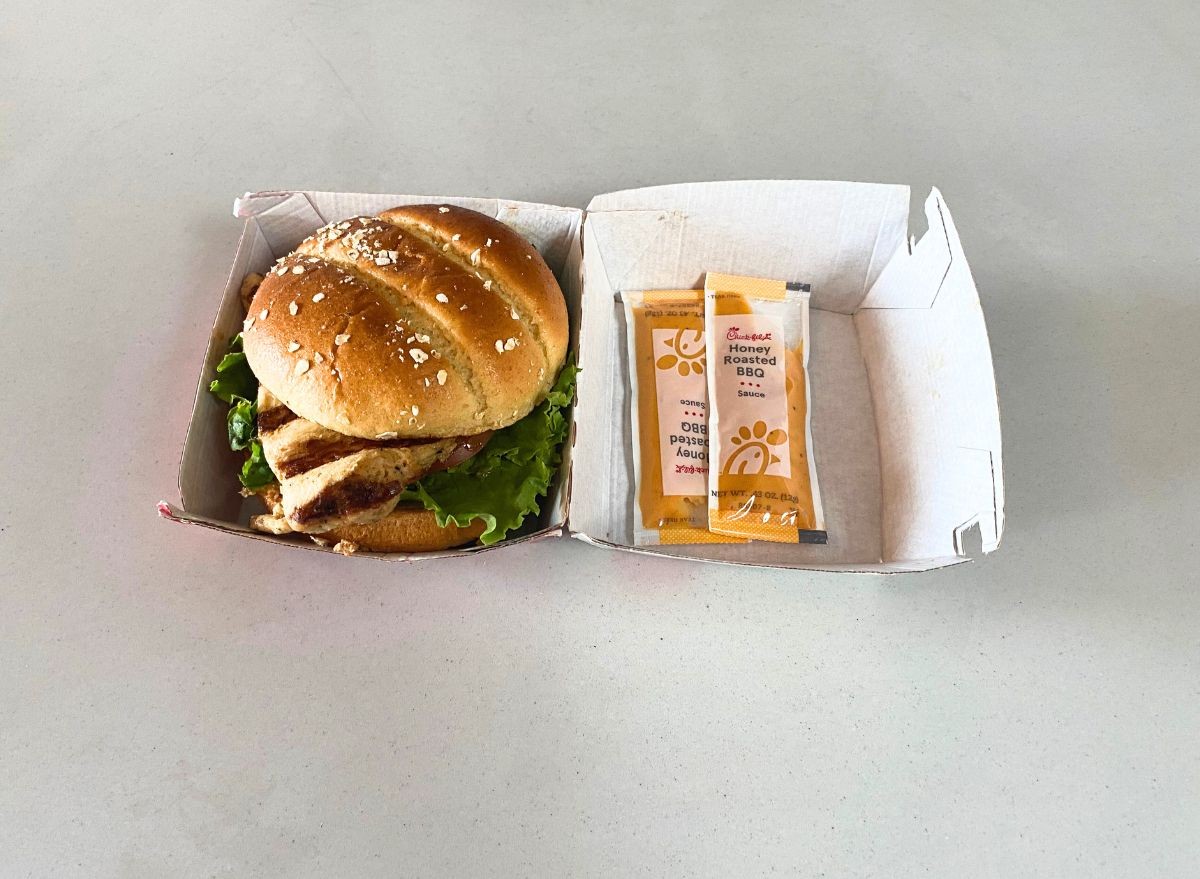
By implementing these smart swaps and customizations, you can enjoy your favorite fast-food meals while making healthier choices. Always remember to check the nutritional information for your specific customizations to ensure they align with your health goals. For more tips and detailed nutritional guides, visit foods.edu.vn.
4. Debunking Myths About Healthy Eating and Fast Food
There are many misconceptions about healthy eating and fast food that can lead to confusion and poor choices. This section addresses common myths and provides factual information to help you make informed decisions.
4.1. Myth: Fast Food is Always Unhealthy
Fact: While many fast-food options are high in calories, fat, and sodium, it’s not accurate to say that all fast food is unhealthy. As we’ve discussed, many restaurants now offer healthier alternatives such as salads, grilled chicken, and oatmeal. The key is to be informed and make smart choices.
4.2. Myth: Salads are Always the Healthiest Option
Fact: Salads can be a healthy choice, but they can quickly become unhealthy depending on the toppings and dressings. Creamy dressings, fried toppings, and excessive cheese can add significant calories, fat, and sodium. Opt for vinaigrette dressings, lean proteins, and plenty of vegetables to keep your salad healthy.
4.3. Myth: Low-Fat or Fat-Free Options are Always Better
Fact: While reducing fat intake can be beneficial, low-fat or fat-free options are not always the healthiest choice. Sometimes, these products contain added sugars, salt, or artificial ingredients to compensate for the lack of fat. It’s essential to read the nutrition labels and consider the overall nutritional profile of the product.
4.4. Myth: Eating Healthy Means Giving Up Taste
Fact: Eating healthy doesn’t mean sacrificing taste. Many healthy fast-food options are delicious and satisfying. Experiment with different flavors and ingredients to find healthy meals that you enjoy. Customizing your order with spices, herbs, and fresh vegetables can enhance the taste of your meal without adding extra calories or unhealthy ingredients.
4.5. Myth: You Have to Spend a Lot of Money to Eat Healthy
Fact: Eating healthy doesn’t have to break the bank. Many affordable fast-food options are also healthy. For example, oatmeal, grilled chicken sandwiches, and salads with simple vinaigrette dressings are often budget-friendly and nutritious. Planning your meals and cooking at home can also help you save money while eating healthy.
4.6. Myth: Healthy Eating is Complicated
Fact: While nutrition science can be complex, the basic principles of healthy eating are straightforward. Focus on eating a variety of whole foods, including fruits, vegetables, lean proteins, and whole grains. Limit your intake of processed foods, sugary drinks, and unhealthy fats. With a little knowledge and planning, healthy eating can be simple and sustainable.
By debunking these common myths, you can approach healthy eating with more confidence and make informed choices, even when eating at fast-food restaurants.
5. Practical Tips for Maintaining a Healthy Diet with Fast Food
Incorporating fast food into a healthy diet requires careful planning and mindful choices. Here are some practical tips to help you maintain a balanced and nutritious diet while still enjoying the convenience of fast food.
5.1. Plan Your Meals in Advance
Planning your meals ahead of time can prevent impulsive decisions when you’re hungry and on the go. Check the nutritional information online for fast-food restaurants you frequent and identify healthier options. Knowing what you’re going to order before you arrive can help you stick to your health goals.
5.2. Limit Your Fast-Food Intake
Fast food should be an occasional treat rather than a regular part of your diet. Aim to limit your fast-food intake to once or twice a week at most. When you do eat fast food, make sure to choose the healthiest options available and balance your meal with nutritious choices for the rest of the day.
5.3. Focus on Portion Control
Portion sizes at fast-food restaurants are often larger than necessary. Opt for smaller sizes and avoid “super-sizing” your meals. Sharing a meal with a friend or saving half for later can also help you control your portion sizes and calorie intake.
5.4. Stay Hydrated
Drink plenty of water throughout the day, especially when eating fast food. Sugary drinks like sodas and juices can add empty calories and contribute to weight gain. Opt for water, unsweetened tea, or other low-calorie beverages instead.
5.5. Balance Your Fast-Food Meal with Nutritious Choices
If you know you’re going to have fast food for lunch, make sure to balance it with a healthy breakfast and dinner. Include plenty of fruits, vegetables, lean proteins, and whole grains in your other meals to ensure you’re getting a balanced and nutritious diet.
5.6. Read Nutrition Labels Carefully
Take the time to read nutrition labels and understand the nutritional content of your meal. Pay attention to calories, fat, sodium, sugar, and protein. Use this information to make informed choices and customize your order for a healthier outcome.
5.7. Be Mindful of Your Eating Habits
Practice mindful eating by paying attention to your hunger and fullness cues. Eat slowly and savor your food, rather than rushing through your meal. This can help you avoid overeating and make more conscious food choices.
By following these practical tips, you can successfully incorporate fast food into a healthy diet without compromising your health goals.
6. Addressing Specific Dietary Needs and Restrictions
When it comes to fast food, those with dietary restrictions or specific dietary needs may face additional challenges. This section offers tailored advice for individuals with common dietary concerns, such as gluten intolerance, vegetarianism, and diabetes, helping them navigate fast-food menus with confidence.
6.1. Gluten-Free Options
For individuals with gluten intolerance or celiac disease, finding gluten-free options at fast-food restaurants can be tricky. Here are some tips:
- Research in Advance: Check the restaurant’s website for a list of gluten-free items.
- Ask About Preparation Methods: Ensure that your food is prepared in a way that avoids cross-contamination with gluten-containing ingredients.
- Opt for Naturally Gluten-Free Choices: Some naturally gluten-free options include salads (without croutons), grilled chicken, and some rice bowls.
- Be Cautious with Sauces and Dressings: Many sauces and dressings contain gluten, so it’s best to ask about ingredients or choose simple options like olive oil and vinegar.
Examples of potential gluten-free options:
- Chipotle: Bowls with rice, beans, meat, and salsa (ensure no cross-contamination)
- Taco Bell: Power Menu Bowls (without the creamy sauces)
- McDonald’s: Salads (without croutons and gluten-free dressing)
6.2. Vegetarian and Vegan Choices
Vegetarians and vegans can also find suitable options at some fast-food restaurants, although choices may be limited. Here’s how to navigate the menu:
- Look for Plant-Based Options: Some restaurants offer vegetarian burgers, veggie wraps, or salads.
- Customize Your Order: Ask for meat to be removed from sandwiches or bowls.
- Be Aware of Hidden Ingredients: Some vegetarian options may contain animal-derived ingredients like cheese or mayonnaise.
Examples of vegetarian options:
- Taco Bell: Bean burrito (without cheese or sour cream for vegans)
- Subway: Veggie Delite sub (without cheese or mayonnaise for vegans)
- Chipotle: Vegetarian bowls with rice, beans, salsa, and guacamole (ensure no cheese or sour cream for vegans)
6.3. Diabetic-Friendly Options
Individuals with diabetes need to be mindful of their carbohydrate and sugar intake. Here are some tips for making diabetic-friendly choices at fast-food restaurants:
- Choose High-Protein, Low-Carb Options: Grilled chicken, salads, and lean protein sources are good choices.
- Limit Sugary Drinks and Desserts: Opt for water, unsweetened tea, or diet sodas.
- Watch Portion Sizes: Smaller portions can help control blood sugar levels.
- Check Carbohydrate Counts: Many restaurants provide carbohydrate counts for their menu items, which can help you make informed choices.
Examples of diabetic-friendly options:
- McDonald’s: Egg McMuffin (without the English muffin)
- Subway: 6-inch turkey breast sub on whole-wheat bread with lots of veggies
- Wendy’s: Grilled chicken salad with light vinaigrette
By considering these tips and strategies, individuals with dietary restrictions or specific dietary needs can make informed choices and find suitable options at fast-food restaurants. Always remember to communicate your dietary needs clearly when ordering.
7. Incorporating Physical Activity to Balance Fast Food Consumption
Even with the best intentions, occasional fast-food meals can impact your overall health and fitness. Balancing your diet with regular physical activity is essential for maintaining a healthy lifestyle. This section provides practical tips and strategies for incorporating physical activity into your routine to offset the effects of fast-food consumption.
7.1. Understanding the Caloric Balance
The key to maintaining a healthy weight is to balance your caloric intake with your energy expenditure. If you consume more calories than you burn, you will gain weight. If you burn more calories than you consume, you will lose weight. Regular physical activity helps you burn more calories, making it easier to maintain a healthy weight.
7.2. Types of Physical Activity to Consider
There are many different types of physical activity you can incorporate into your routine, including:
- Cardiovascular Exercise: Activities like running, swimming, cycling, and dancing can help you burn calories and improve your cardiovascular health.
- Strength Training: Lifting weights or using resistance bands can help you build muscle mass, which can boost your metabolism and help you burn more calories even when you’re at rest.
- Flexibility and Balance Exercises: Activities like yoga and Pilates can improve your flexibility, balance, and overall well-being.
7.3. Setting Realistic Goals
Start by setting realistic goals for your physical activity. Aim for at least 150 minutes of moderate-intensity aerobic exercise or 75 minutes of vigorous-intensity aerobic exercise per week, as recommended by the American Heart Association. You can break this up into smaller chunks of time, such as 30 minutes of exercise most days of the week.
7.4. Making Exercise a Habit
To make exercise a habit, try these tips:
- Schedule Your Workouts: Treat your workouts like important appointments and schedule them in your calendar.
- Find an Activity You Enjoy: Choose an activity you find enjoyable, so you’re more likely to stick with it.
- Exercise with a Friend: Exercising with a friend can provide motivation and accountability.
- Make it Convenient: Choose activities that are convenient and accessible, such as walking during your lunch break or taking the stairs instead of the elevator.
7.5. Examples of Activities to Offset Fast Food Meals
Here are some examples of how much physical activity you would need to do to burn off the calories from common fast-food meals:
| Fast Food Meal | Calories | Activity to Burn Off (Approximate) |
|---|---|---|
| McDonald’s Big Mac | 540 | 1 hour of brisk walking or 30 minutes of running |
| Burger King Whopper | 677 | 1 hour and 15 minutes of brisk walking or 40 minutes of running |
| Chick-fil-A Chicken Sandwich | 440 | 45 minutes of brisk walking or 25 minutes of running |
| Taco Bell Cantina Chicken Power Bowl | 490 | 50 minutes of brisk walking or 30 minutes of running |
| Wendy’s Apple Pecan Salad (Full Size) | 440 | 45 minutes of brisk walking or 25 minutes of running |
By incorporating regular physical activity into your routine, you can balance the effects of occasional fast-food consumption and maintain a healthy lifestyle.
8. The Role of Mindfulness in Making Healthy Fast Food Choices
Mindfulness, the practice of being fully present and aware of your thoughts, feelings, and sensations, can play a significant role in making healthier fast food choices. By cultivating mindfulness, you can develop a greater awareness of your eating habits and make more conscious decisions. This section explores the benefits of mindful eating and provides practical techniques for incorporating mindfulness into your fast-food experiences.
8.1. What is Mindful Eating?
Mindful eating involves paying attention to the present moment while eating, without judgment. It’s about:
- Slowing Down: Taking your time to eat and savor each bite.
- Paying Attention to Your Senses: Noticing the colors, aromas, textures, and flavors of your food.
- Listening to Your Body: Recognizing your hunger and fullness cues.
- Avoiding Distractions: Turning off the TV, putting away your phone, and focusing on your meal.
- Being Non-Judgmental: Accepting your food choices without guilt or shame.
8.2. Benefits of Mindful Eating
Mindful eating can lead to several benefits, including:
- Improved Digestion: Eating slowly and mindfully can improve digestion and nutrient absorption.
- Reduced Overeating: Paying attention to your fullness cues can help you avoid overeating.
- Greater Food Satisfaction: Savoring each bite can increase your enjoyment of food.
- Healthier Food Choices: Being more aware of your eating habits can help you make more conscious and nutritious food choices.
8.3. Techniques for Mindful Eating at Fast Food Restaurants
Here are some practical techniques for incorporating mindfulness into your fast-food experiences:
- Take a Moment Before Eating: Before you start eating, take a few deep breaths and notice the colors, aromas, and textures of your food.
- Eat Slowly: Put down your fork or spoon between bites and chew your food thoroughly.
- Savor Each Bite: Pay attention to the flavors and textures of each bite.
- Listen to Your Body: Pause during your meal and ask yourself if you’re still hungry.
- Avoid Distractions: Turn off your phone and focus on your meal.
- Be Non-Judgmental: Accept your food choices without guilt or shame.
8.4. Overcoming Challenges to Mindful Eating in Fast Food Settings
Fast food environments can be challenging for mindful eating due to distractions and the fast-paced nature of the experience. Here are some tips for overcoming these challenges:
- Find a Quiet Spot: Choose a quiet spot to eat where you can focus on your meal.
- Set Intentions: Before you start eating, set an intention to eat mindfully.
- Practice Patience: Be patient with yourself and don’t get discouraged if you slip up.
- Focus on One Bite at a Time: If you find yourself getting distracted, bring your attention back to the present moment and focus on the next bite.
By practicing mindfulness, you can develop a greater awareness of your eating habits and make more conscious and nutritious choices, even when eating at fast-food restaurants.
9. Future Trends in Healthy Fast Food
The fast-food industry is constantly evolving, with a growing emphasis on healthier options and sustainable practices. This section explores future trends in healthy fast food, including plant-based alternatives, personalized nutrition, and technology-driven solutions.
9.1. Plant-Based Alternatives
The demand for plant-based alternatives is on the rise, driven by concerns about health, animal welfare, and the environment. Fast-food restaurants are responding by offering plant-based burgers, chicken alternatives, and other meatless options. This trend is expected to continue, with more innovative and delicious plant-based products hitting the market.
9.2. Personalized Nutrition
Personalized nutrition involves tailoring dietary recommendations to an individual’s unique needs and preferences. Advances in technology and genetics are making it easier to personalize nutrition plans based on factors like DNA, gut microbiome, and lifestyle. Fast-food restaurants may start offering customized meal options based on individual health data in the future.
9.3. Technology-Driven Solutions
Technology is playing an increasing role in the fast-food industry, from online ordering and delivery to automated kitchens and personalized nutrition apps. These technologies can help consumers make healthier choices, track their caloric intake, and customize their meals to meet their dietary needs.
9.4. Sustainable Practices
Sustainability is becoming a major concern for consumers, and fast-food restaurants are responding by adopting more sustainable practices, such as reducing waste, using eco-friendly packaging, and sourcing ingredients from local and sustainable farms. This trend is expected to continue as consumers demand greater transparency and accountability from the food industry.
9.5. Transparency and Education
Consumers are demanding greater transparency about the ingredients and nutritional content of their food. Fast-food restaurants are responding by providing more detailed nutritional information and educating consumers about healthy eating. This trend is expected to continue as consumers become more health-conscious and demand greater control over their food choices.
These future trends in healthy fast food offer exciting possibilities for consumers and the industry. By embracing innovation and prioritizing health, sustainability, and transparency, fast-food restaurants can play a positive role in promoting healthy eating and a sustainable food system.
10. Resources and Further Reading
For those looking to delve deeper into the topic of healthy fast food options, numerous resources and further reading materials are available. This section provides a curated list of books, websites,
